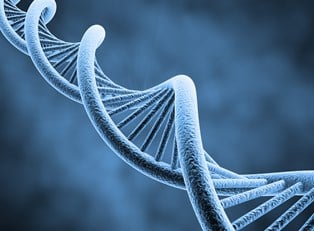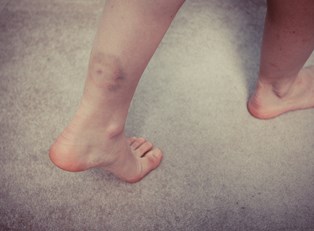Hemophilia is a blood disorder in which certain proteins called clotting factors are absent, too few, or functioning improperly. Patients with hemophilia do not have the protective clotting properties of normal blood. As a result, once they start bleeding, they may have difficulty stopping the flow. Excessive bleeding can take a toll joints and organs, potentially becoming life-threatening. Below is a brief explanation of a few main causes of this rare blood disorder.
Clotting Factors
Platelets are tiny blood particles that are produced in the bone marrow. They help maintain the integrity of blood so that spontaneous internal bleeding does not occur, and they also shore up at a site where bleeding occurs and form a clot to stop bleeding. Platelets need clotting factors in order to stick together and prevent bleeding or effectively dam up a bleeding wound. Without clotting factors, platelets are unable to do their important job.
In hemophilia, the gene responsible for producing clotting factors is either faulty or it mutates. As a result, the gene does not produce an effective amount of working clotting factors; it is this shortage of clotting factors that causes hemophilia.
Types of Hemophilia
Hemophilia A and Hemophilia B are the two most common forms of the disorder. Both are genetically inherited through the mother on the X-linked sex chromosome. In both A and B, when a daughter is born there is a 50% chance that the she will be an asymptomatic carrier of the gene. When a son is born, there is a 50% chance that he will have hemophilia.
Hemophilia A, the most commonly occuring form of the diseasem, is caused by a deficiency of clotting factor VIII. According to the National Heart, Lung, and Blood Institute, about eight out of ten patients with hemophilia have type A, or classic hemophilia. Unfortunately, most cases of classic hemophilia are severe.
Hemophilia B is caused by a deficiency of clotting factor IX. It is also called Christmas disease or royal disease. Type B is the second most common and is sometimes not diagnosed until adulthood.
Hemophilia C affects men and women equally and is not linked with the X chromosome. Both parents must carry the defective gene responsible for this type. Hemophilia C is also called plasma thromboplastin antecedent (PTA) or Rosenthal syndrome. Since women can be affected, excessive bleeding during menstruation is a danger.
Acquired Hemophilia
In nearly all cases of hemophilia, the disease is inherited. However, a patient may acquire hemophilia in a medical situation that is rarer than genetic transmission. In this case, the clotting factors are present and work properly, but for some reason the body perceives the clotting factors as a threat. As a defensive response, proteins called antibodies are produced in the blood to attack and destroy the clotting factors. The result is the same as the inherited forms of hemophilia: a shortage of clotting factors. Patients with a family or medical history of autoimmune inefficiencies may be more at risk of acquiring hemophilia.



